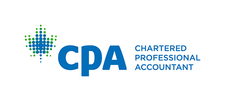MONEYSAVER
Start planning now for interest rate increases.
Historically low rates have encouraged borrowing for equipment, real estate, operating lines of credit and everyday purchases. How much longer interest rates will remain at these levels is an open question but now is a good time to start thinking about the potential impact of higher rates on your business and personal life.
Potential Effects of Higher Interest Rates
Here are some of the effects higher rates could have on your business:
- Higher interest rates will drive up the cost of operations, manufacturing and delivery, which will force small businesses to either increase prices or face a smaller bottom line. If prices go up, consumers cut back their purchases if they need to borrow for vehicles and mortgages, or use lines of credit.
- Any resulting cash crunch may force customers to stretch payment time on their payables. This makes you your customers’ banker.
- Payout periods of as much as eight years for equipment and vehicles have led many purchasers to believe that if they can make the monthly payments they can afford the asset. But, as the years pass, the warranty expires, the vehicle value plummets and repair bills mount. It may be difficult to finance a replacement if a significant amount is still owing.
- Personal finances are affected as well. A salary increase decreases company profit while increasing personal income taxes.
- Financial institutions become more selective. New companies without credit ratings may find it impossible to obtain a loan. Established companies may not be able to extend lines of credit.
Review income statements and balance sheets.
Proactive Planning
The following suggestions may help reduce the impact of rising interest rates on your business:
- Review your corporate income statements and balance sheets for the last five years because they reflect the lower cost of outstanding debt as well as the historical cost of your operating assets. Calculate the impact on the corporate bottom line if interest rates increase by two, three or more percentage points.
- Review your asset base. Determine what assets will need to be replaced within the next five years and estimate their replacement cost. If sales and expenses in the next five years remain the average of the last five years, would the increase in asset cost, combined with the need to borrow additional funds at higher interest rates, put undue stress on your operational capability?
- Review your personal debt at the same time as you review the corporate financials.
- Start building a cash reserve within your business.
- Consider reducing the long-term payouts on equipment and vehicles.
- Lock in existing secured loans.
- Lock in mortgages.
- Start incremental price increases to avoid a sudden and dramatic increase that may scare off clients if imposed later.
- Reduce the number of days outstanding for accounts receivable. Review your client base with the goal of reducing the lines of credit granted. Negotiate new payment terms with your long-term customers.
- Consider deposits on all jobs. Potential customers should understand that there are up-front costs that must be paid for, and that you are not a bank but a contractor.
- If your business has credit card balances or lines of credit with high interest rates, pay them off. If business credit cards are essential to your business, structure cash flow to pay off monthly balances.
- Use a percentage-of-completion method for payment on long-term contracts. If payment is not made as arranged, stop working. Better to walk away with a 20% loss then a 100% write off.
- Review all sources of company credit. Eliminate those with variable rates. Fledgling entrepreneurs should work to establish a line of credit with their financial institutions and increase it over time to ensure that in the future, that line of credit is still available.
- More established businesses should work to reduce the debt on their lines of credit in case a buffer is needed to meet short-term cash needs.
An Ounce of Prevention …
Should interest rates start to rise, the trend is likely to continue upwards. Owner-managers should start now to model their business activity in potential future economic and credit conditions. Business plans derived from these models will help ensure the continued success of their business and family finances when the 2020 decade rolls around.
Contact Argento CPA today!
Source: BUSINESS MATTERS
Disclaimer: BUSINESS MATTERS deals with a number of complex issues in a concise manner; it is recommended that accounting, legal or other appropriate professional advice should be sought before acting upon any of the information contained therein.
Although every reasonable effort has been made to ensure the accuracy of the information contained in this letter, no individual or organization involved in either the preparation or distribution of this letter accepts any contractual, tortious, or any other form of liability for its contents or for any consequences arising from its use.
BUSINESS MATTERS is prepared bimonthly by the Chartered Professional Accountants of Canada for the clients of its members.
Richard Fulcher, CPA, CA – Author; Patricia Adamson, M.A., M.I.St. – CPA Canada Editor.
Contact us: patricia@adamsonwriters.ca


